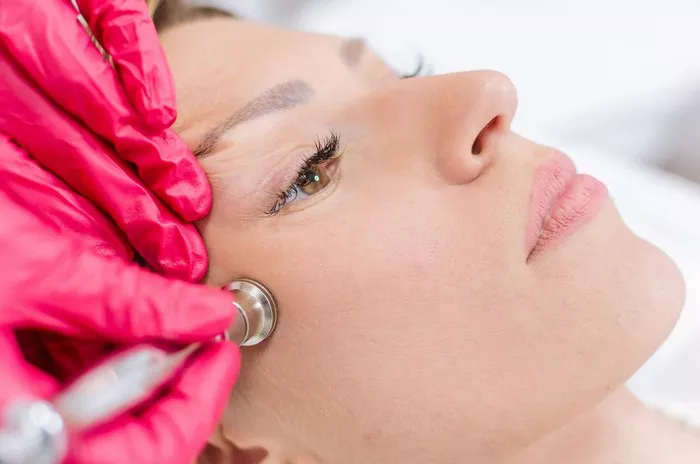Microdermabrasion is a popular cosmetic procedure that helps improve the texture and appearance of the skin. It is a non-invasive exfoliation technique that removes dead skin cells and stimulates cell turnover, resulting in a smoother, more radiant complexion. One common question many people have is whether their skin will peel after microdermabrasion. In this article, we will explore the effects of microdermabrasion on the skin and explain whether peeling is a typical occurrence.
Understanding Microdermabrasion
Microdermabrasion is a gentle and effective procedure that involves the use of a handheld device to exfoliate the outermost layer of the skin. This process is typically performed using either abrasive crystals or a diamond-tipped wand, which are gently passed over the skin to remove dead skin cells and debris. The device simultaneously vacuums away the exfoliated particles, revealing fresher, healthier skin underneath.
The exfoliation process of microdermabrasion helps improve various skin concerns, including fine lines, wrinkles, hyperpigmentation, acne scars, and uneven skin texture. It also stimulates collagen production, leading to firmer and more youthful-looking skin.
What to Expect During and After Microdermabrasion
During a microdermabrasion treatment, you may experience a mild scratching or vibrating sensation as the device is moved across your skin. However, the procedure is generally well-tolerated and does not cause significant discomfort. Many individuals find the treatment to be relaxing and liken it to a deep exfoliating massage.
After the procedure, your skin may appear slightly pink or flushed, similar to a mild sunburn. This is a temporary effect and typically subsides within a few hours. Some individuals may also experience a mild tightness or dryness in their skin immediately after the treatment.
Does Microdermabrasion Cause Skin Peeling?
Contrary to more aggressive exfoliation procedures like chemical peels, microdermabrasion does not typically cause visible peeling of the skin. The level of exfoliation achieved with microdermabrasion is much gentler, targeting only the outermost layer of dead skin cells. As a result, the shedding of old skin cells is not as dramatic as with other treatments.
However, it’s important to note that microdermabrasion does promote cellular turnover and encourages the growth of new skin cells. While the process of shedding dead skin cells is more gradual, you may still experience some mild flaking or sloughing of dead skin in the days following the treatment. This is a natural part of the skin’s rejuvenation process and should not be a cause for concern.
The extent of skin flaking or peeling after microdermabrasion varies from person to person and depends on individual skin characteristics and the intensity of the treatment. Generally, if you undergo a series of microdermabrasion sessions, you may notice a cumulative improvement in your skin’s texture and a reduction in the occurrence of flaking.
Post-Treatment Skincare Recommendations
To support the healing process and maintain the results of your microdermabrasion treatment, it’s important to follow appropriate post-treatment skincare recommendations. Here are some essential tips to consider:
Keep Your Skin Hydrated: Moisturize your skin regularly to prevent dryness and promote healing. Choose a gentle, non-comedogenic moisturizer that is suitable for your skin type.
Protect Your Skin from the Sun: After microdermabrasion, your skin may be more sensitive to the sun. Protect it by wearing sunscreen with a high SPF, and limit sun exposure, especially during peak hours.
Avoid Harsh Skincare Products: Refrain from using harsh exfoliants, scrubs, or products containing strong active ingredients immediately after microdermabrasion. These can irritate the skin and disrupt the healing process.
Follow Your Skincare Professional’s Instructions: Your skincare professional may provide specific post-treatment guidelines tailored to your skin type and concerns. It’s important to follow their instructions regarding skincare products, cleansing routines, and any additional recommendations they provide.
Stay Hydrated and Maintain a Healthy Lifestyle: Drinking plenty of water and maintaining a healthy lifestyle can help support skin health and enhance the results of your microdermabrasion treatment.
Conclusion
In summary, while microdermabrasion does not typically cause significant skin peeling, you may experience some mild flaking or sloughing of dead skin cells in the days following the treatment. This is a natural part of the skin’s rejuvenation process and should not be a cause for concern. By following appropriate post-treatment skincare recommendations, you can support the healing process and maintain the results of your microdermabrasion treatment. Remember to consult with a skincare professional to determine if microdermabrasion is suitable for you and to receive personalized guidance based on your skin type and concerns.


